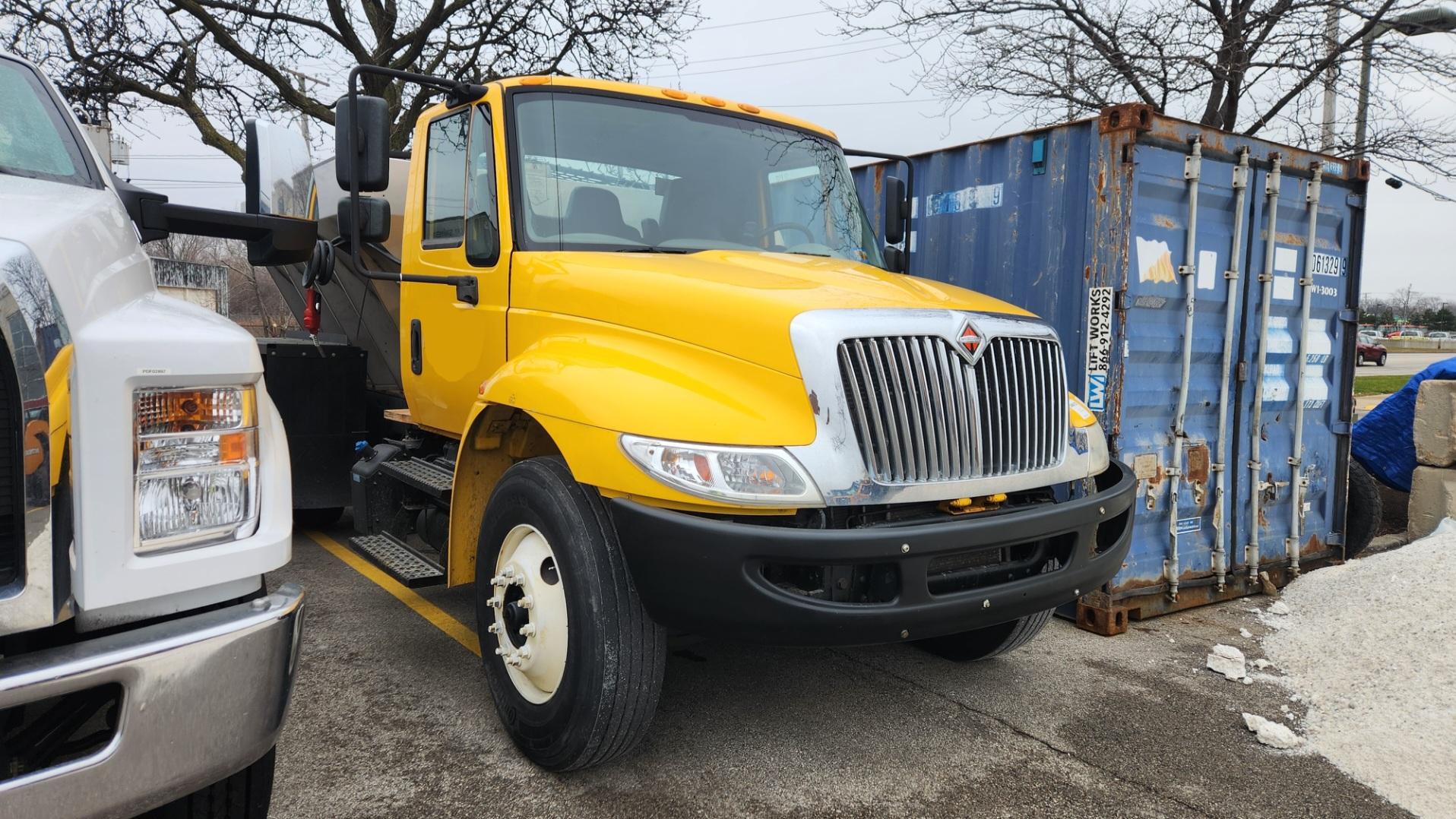If you are interested in driving certain commercial vehicles but do not need the extensive qualifications of a Class A or B CDL, a Class C CDL License might be exactly what you need. In short, a class C CDL allows you to operate commercial vehicles that transport 16 or more passengers, including the driver, or hazardous materials. From shuttle services to small commercial operations, a class C CDL opens doors to diverse driving opportunities while requiring less extensive training than higher license classes.
Now let’s dive into our blog post to get everything you need to know about class C CDL!
What is a CDL Class C?
A class C CDL is a specialized license, besides class A and class B, required to operate certain types of vehicles that carry 16 or more passengers (including the driver) or transport hazardous materials. It is specifically tailored for vehicles that are smaller than those covered by class A or B licenses but still require professional handling due to their purpose or contents.

Class C CDL permits drivers to operate vehicles not covered by Classes A or B, particularly those transporting passengers or hazardous materials. The Class C license is particularly beneficial for individuals working in industries where transporting small groups of people or hazardous goods is essential.
With a class C CDL and the appropriate endorsements, drivers can legally operate:
- Small Hazmat vehicles (with the H endorsement on the license).
- Passenger vans that are capable of carrying 16 or more (with the P endorsement on the license).
- Small trucks towing a trailer (weighs less than 10,001 pounds).
What are Class C CDL requirements?
To acquire a class C CDL, you must meet several requirements to ensure that you are comprehensively qualified for the license:
- Age requirement: Anyone applying for CDL in general or for class C CDL in particular must be at least 18 years old to drive intrastate and 21 to drive interstate. Are you confused about intrastate vs interstate terms? Unfold their differences here!
- Residency requirement: Applicants must also provide their proof of residency to be qualified to get a class C CDL.
- Medical certification: Applicants must pass a Department of Transportation (DOT) medical exam including physical and vision tests to receive a medical certificate verifying that they are physically fit to drive.
- Background check (for H endorsement): According to the Federal Transportation Security Administration (TSA), drivers seeking to acquire or renew hazardous materials endorsement on their CDL must complete a security threat assessment (background check).
It is worth noting that those requirements above are just universal requirements for class C CDL. You had better carefully check your states’ department of transportation for specific requirements.

How to get a CDL class C license
Make sure you have met all class C CDL requirements of your state. Now follow our steps to get your license!

Take the CDL written knowledge test
Before being able to get a Commercial Driver License, especially class C you must first acquire a Commercial Learner’s Permit (CLP) which will allow you to get training on the road.
How to get this permit? All you have to do is to pass the written knowledge test in which your knowledge about operating a vehicle will be tested. Now let’s see what you have to prepare to ace this test!
General knowledge test
The general knowledge portion is required for all CDL applicants and consists of about 50 questions that cover essential information, including traffic laws, safety protocols, and proper vehicle operation. This will test your understanding of road signs, accident prevention techniques, and safe driving practices.
There are 50 questions in the general knowledge test, and a minimum score of 80% is typically needed to pass. It means that you must correctly answer at least 40 out of the 50 questions.
Take the free CDL general knowledge practice test here!
Endorsement test
Endorsement tests for a Commercial Driver’s License (CDL) are additional exams required (if applicable) to operate specific types of vehicles or handle certain cargo. These tests assess a driver’s knowledge and skills for endorsements like HazMat, Tanker, Doubles/Triples, or Passenger vehicles.
Each test of endorsement focuses on safety regulations, handling requirements, and operational guidelines unique to that endorsement. Passing these exams demonstrates that the driver is qualified to manage specialized vehicles or cargo, ensuring safety and compliance on the road.
Air brakes (if applicable)
The Air brakes is required for those planning to drive a vehicle with an air brake system, which is commonly used in commercial vehicles. This section usually consists of 25 questions covering air brake components, system operations, and troubleshooting air brake issues to test your knowledge of both single and dual air brake systems. To pass this section, you need to answer correctly at least 20 out of 25 questions.
Take the free CDL air brakes practice test here!
Combination vehicles (if applicable)
If you plan to operate a combination vehicle, such as a tractor-trailer or a vehicle towing a large trailer, the combination vehicle test is typically demanded. This test generally includes around 20 questions about the dynamics and handling of combination vehicles, including coupling and uncoupling procedures, managing trailers, and preventing rollovers.
To ensure drivers understand that unique challenges and safety measures associated with vehicles, 16 correct answers are needed.
Practice the CDL combination vehicles test here!
Take the CDL skills/road test
Once you have successfully passed the written knowledge test, you will receive the Commercial Learner’s Permit which allows you to take the CDL skills test. CDL skills test is designed to evaluate specific skills needed to safely operate a commercial vehicle on the roads. This hands-on test has three parts: the pre-trip inspection, basic vehicle control, and on-road driving.
Pre-trip inspection
During the pre-trip inspection, you will demonstrate your ability to inspect your vehicle to confirm it is safe to drive. This portion tests your knowledge of vehicle components and your ability to identify and explain what to look for in an inspection.
Specifically, You’ll be expected to check various parts of the vehicle, including tires, brakes, lights, and fluid levels, and explain why each check is necessary for safety. This section ensures that drivers can perform a thorough inspection to avoid potential safety hazards on the road.
Practice the CDL pre-trip inspection practice test here!
Basic vehicle control
The basic vehicle control section involves operating the vehicle through a controlled environment, such as a test course. This part of the test assesses your ability to control the vehicle during basic maneuvers, including backing up, parking, and making tight turns.
You may be asked to complete several specific maneuvers, such as straight-line backing, offset backing, and alley docking. Mastery of these skills demonstrates that you can handle the vehicle in confined spaces, which is essential for safe commercial driving.
On-road driving
On-road driving is the final part of the CDL Skills Test. During this segment, you will drive on public roads while an examiner evaluates your ability to operate the vehicle in real traffic conditions.
In particular, you are expected to demonstrate safe driving practices, including proper lane usage, turning, stopping, and observing traffic signals and signs. Passing this final section confirms that you’re ready to safely and legally operate a commercial vehicle on public roads.
Successfully completing both the written knowledge test and the skills test is required to earn your CDL Class C, qualifying you to drive specific types of commercial vehicles based on the endorsement you hold.
FAQs
1. What does it mean to be class C?
A Class C CDL allows drivers to operate commercial vehicles that carry 16 or more passengers, including the driver, or transport hazardous materials requiring placards. It is generally used for smaller commercial vehicles, like passenger vans or specific small trucks.
2. What are class C trucks?
Class C trucks are commercial vehicles that are smaller than class A or B trucks. They are typically used to transport a limited number of passengers, such as shuttle vans or small buses, or to carry certain hazardous materials in regulated quantities.
3. What can I drive with a Class C license?
A Class C CDL lets you drive smaller commercial vehicles like Small Hazmat vehicles, Passenger vans that are capable of carrying 16 or more, and small trucks towing a trailer. It is specifically for vehicles not covered by class A or B licenses but still requires commercial certification.
4. Is a CDL class C commercial license?
Yes, a CDL class C is a commercial license. It allows drivers to operate certain types of commercial vehicles, specifically those carrying passengers or hazardous materials that require additional safety regulations.
5. How long is a C Class license valid?
A Class C CDL is normally valid for four, five or eight years, depending on the state. It must be renewed periodically to ensure that the driver meets the necessary medical and legal requirements for commercial driving.
6. How long does it take to get a C Class license?
The process of getting a Class C license can take a few weeks to a few months, depending on the training program and state requirements. It involves passing both a written knowledge test and a skills/road test.
7. What is the largest truck you can drive with a Class C license?
A CDL Class C allows you to drive a vehicle with a gross vehicle weight rating (GVWR) of 26,001 pounds or less, or a single vehicle towing a trailer or other vehicle that weighs less than 10,001 pounds. Therefore, the largest truck you can drive with a class C CDL is those that either its GVWR does not exceed 26,001 pounds, or its trailer weighs less than 10,001 pounds.
8. What is better Class B or C?
Class B offers broader driving privileges than Class C, allowing drivers to operate larger commercial vehicles, such as buses and box trucks. Class C is more limited, covering smaller vehicles that transport passengers or hazardous materials but not heavy-duty trucks.
Learn about class B CDL here!
9. What is class A or class C?
Class A and Class C are CDL license classes for different commercial vehicles. Class A covers large vehicles, like tractor-trailers and heavy trucks, while Class C is for smaller commercial vehicles carrying passengers or specific hazardous materials.
Want to get a class A CDL? Drop by Class A CDL to learn the know-how!
Final thoughts
Obtaining a Class C CDL opens doors to commercial driving careers involving smaller vehicles for passenger transport or hazardous materials. This license is ideal for entry-level commercial drivers looking to gain practical experience before advancing to Class A or B. Preparing with CDL Practice Tests to ensure success on both the knowledge and skills exams, equipping you with the confidence and qualifications to get started in the driving career.



